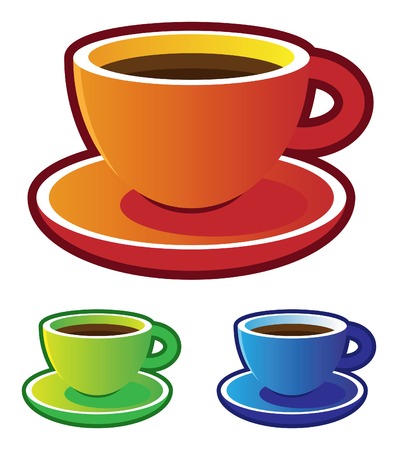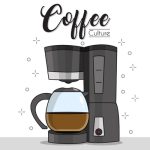1. Using the Wrong Coffee Grind Size
One of the most common mistakes people make with a French press is using the wrong grind size for their coffee beans. It might not seem like a big deal, but the grind size plays a huge role in how your coffee tastes.
Many folks use coffee thats ground too fine or too coarse, which leads to over-extraction or under-extraction. Over-extracted coffee (from too fine a grind) can taste bitter and harsh. On the other hand, under-extracted coffee (from too coarse a grind) often ends up weak and watery — not exactly the rich, bold cup you’re hoping for from a French press.
Why Grind Size Matters
The French press brewing method relies on full immersion — meaning your coffee grounds sit in hot water for several minutes before being filtered out. A coarse, even grind gives you the right balance, allowing enough time for flavor to develop without pulling out unwanted bitterness or acidity.
Grind Size Comparison
| Grind Size | Description | Result in French Press |
|---|---|---|
| Too Fine (Espresso Grind) | Feels like powdered sugar | Bitter, muddy, hard to plunge |
| Too Coarse | Larger chunks, uneven pieces | Weak flavor, under-extracted |
| Just Right (Coarse & Even) | Like sea salt or breadcrumbs | Smooth, full-bodied brew |
Pro Tip:
If youre buying pre-ground coffee at the store, check if its labeled as “coarse grind” or “French press grind.” Better yet, invest in a burr grinder and grind your beans fresh at home — it makes a noticeable difference!
2. Not Measuring Coffee and Water Properly
One of the most common mistakes people make with a French press is not measuring their coffee and water accurately. Eyeballing your coffee-to-water ratio might seem convenient, especially during busy mornings, but it often leads to inconsistent brews—sometimes too weak, other times too bitter.
To get the most out of your French press, using a kitchen scale is a game-changer. It ensures youre using the right amount of coffee grounds and water every single time, which leads to a more balanced and flavorful cup.
Why Measuring Matters
Coffee brewing is part art, part science. When you measure by volume (like scoops or tablespoons), you cant account for differences in bean size, roast level, or grind consistency. Weight-based measurements offer precision and repeatability, which are key to nailing your perfect brew.
Recommended Coffee-to-Water Ratio
A good starting point is a 1:15 ratio—1 gram of coffee for every 15 grams (or milliliters) of water. Heres a quick reference guide:
| Coffee (grams) | Water (ml) | Servings |
|---|---|---|
| 15g | 225ml | 1 cup |
| 30g | 450ml | 2 cups |
| 60g | 900ml | 4 cups |
| 75g | 1125ml | 5 cups |
Pro Tip:
If youre grinding your own beans (which we highly recommend), weigh the beans before grinding. Once ground, transfer them into the French press and add the correct amount of hot water based on your desired ratio.
Consistency is key when it comes to great-tasting coffee. Taking a minute to measure both your beans and water can take your morning cup from “just okay” to “wow.”

3. Brewing with Water at the Wrong Temperature
One of the easiest mistakes to make with a French press is using water that’s either too hot or too cold. It might not seem like a big deal, but temperature plays a huge role in how your coffee turns out.
Boiling hot water (212°F) can scorch your coffee grounds, especially if you’re using a dark roast. This leads to bitter, over-extracted flavors that overpower the natural notes of the coffee. On the flip side, water thats too cool—anything below 190°F—won’t extract enough flavor, leaving you with weak and underwhelming coffee.
The sweet spot for brewing French press coffee is between 195°F and 205°F. This range allows for optimal extraction without burning the grounds or coming up short on flavor. If you don’t have a thermometer, just bring your water to a boil and let it sit for about 30 seconds before pouring it over your coffee grounds.
Why Temperature Matters
| Water Temperature | Effect on Coffee |
|---|---|
| Below 190°F | Under-extracted, weak flavor |
| 195°F – 205°F | Balanced extraction, full flavor |
| Above 205°F / Boiling | Bitter, burnt taste |
Quick Tip:
If youre using an electric kettle with temperature control, set it to 200°F for best results. If not, just remember: after boiling, give your water half a minute to cool slightly before brewing—that small wait makes a big difference!
4. Leaving the Coffee to Brew for Too Long or Too Short
Timing is everything when it comes to using a French press. One of the most common mistakes people make is either cutting the brew time too short or letting it sit for too long. Both can seriously affect the flavor of your coffee.
Under-brewing doesnt give the coffee grounds enough time to release their full flavor, leaving you with a weak, watery cup. On the flip side, over-brewing allows too many bitter compounds to seep into your drink, resulting in an unpleasant, harsh taste.
So, whats the sweet spot?
For most French press recipes, 4 minutes is considered the golden rule. This gives just enough time for a balanced extraction—rich flavor without overwhelming bitterness.
Brewing Time vs. Coffee Quality
| Steeping Time | Resulting Flavor |
|---|---|
| Less than 3 minutes | Weak, under-extracted coffee |
| 4 minutes | Balanced and flavorful |
| More than 5 minutes | Bitter and over-extracted |
Pro Tip:
If youre experimenting with different coffee beans or grind sizes, you might need to tweak your timing slightly. But always start with 4 minutes as your baseline and adjust from there based on taste.
5. Not Stirring or Blooming the Grounds
One of the most overlooked steps when using a French press is forgetting to stir the coffee grounds after adding hot water. It may seem like a small detail, but it makes a big difference in how your coffee tastes.
Why Stirring Matters
When you pour hot water over the coffee grounds, not all of them get evenly saturated right away. Some float to the top and never fully mix with the rest of the water. If you skip stirring, those dry spots lead to uneven extraction — meaning some parts of your coffee will be over-extracted (bitter), while others are under-extracted (sour or weak).
The Role of Blooming
Blooming is another key step that many people miss. It happens when freshly ground coffee releases carbon dioxide gas upon contact with hot water. This process causes bubbles to form on the surface. Letting your coffee bloom for about 30 seconds before giving it a good stir allows these gases to escape, which helps prevent unwanted flavors from making their way into your cup.
Quick Guide: Stirring and Blooming Steps
| Step | Description | Time Needed |
|---|---|---|
| Add Hot Water | Fill your French press about halfway with hot water (around 200°F) | 0:00–0:10 sec |
| Let it Bloom | Wait and watch for bubbles to rise — this is the CO₂ escaping | 0:10–0:40 sec |
| Stir Gently | Use a wooden or plastic spoon to gently stir and mix all grounds evenly | 0:40–1:00 min |
Pro Tip:
Avoid using metal spoons when stirring inside a glass French press, as they can crack the glass or scratch the interior. Stick with wood or silicone utensils instead.
6. Letting Coffee Sit in the French Press After Brewing
Once your coffee has finished brewing in a French press, it’s important to act fast. Leaving the coffee sitting in the press with the grounds at the bottom may seem harmless, but it actually leads to over-extraction. This means the coffee continues to brew even after you’ve pushed down the plunger, which results in a bitter, unpleasant taste.
To keep your coffee tasting its best, pour it out right after brewing. If youre not serving or drinking it immediately, transfer it into a thermal carafe to keep it warm without compromising the flavor.
Why Leaving Coffee in the Press Is a Problem
| Issue | What Happens | Better Option |
|---|---|---|
| Over-extraction | Coffee becomes too strong and bitter | Pour into a thermal carafe or serve immediately |
| Temperature drop | Coffee cools quickly and loses its appeal | Use an insulated carafe to maintain warmth |
| Flavor breakdown | Affects aroma and overall experience | Enjoy within 20 minutes of brewing for best taste |
Pro Tip:
If youre making more than one cup and plan to sip slowly, always have a good-quality thermal carafe nearby. It helps preserve both heat and flavor so you can enjoy every cup like its freshly brewed.


